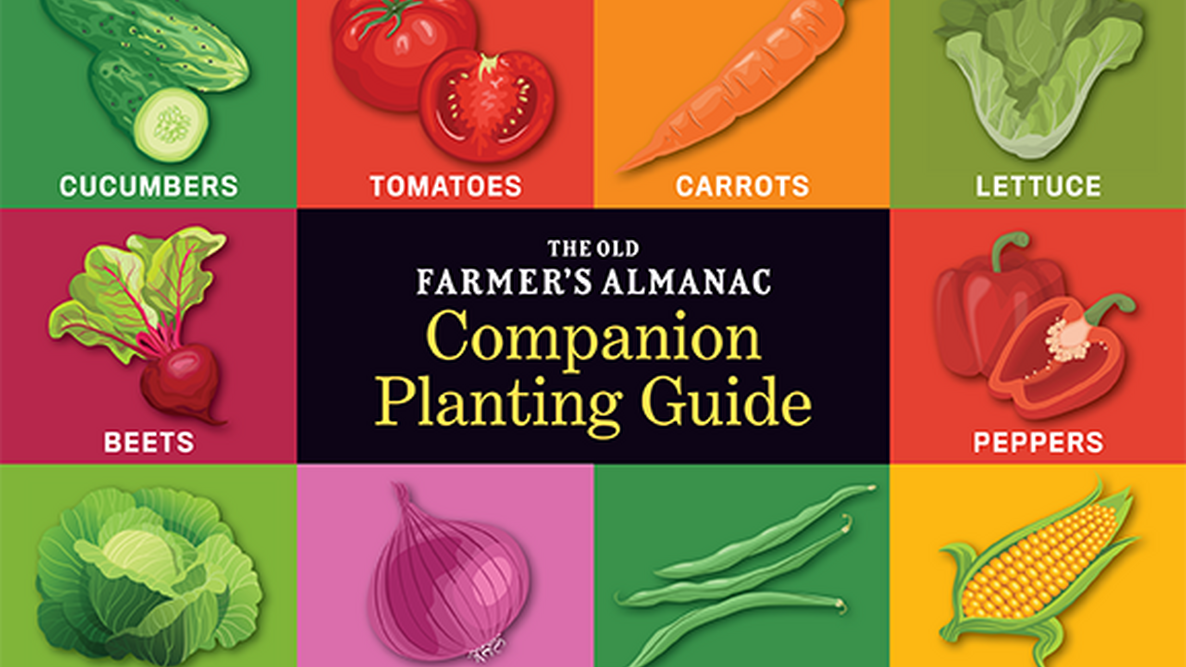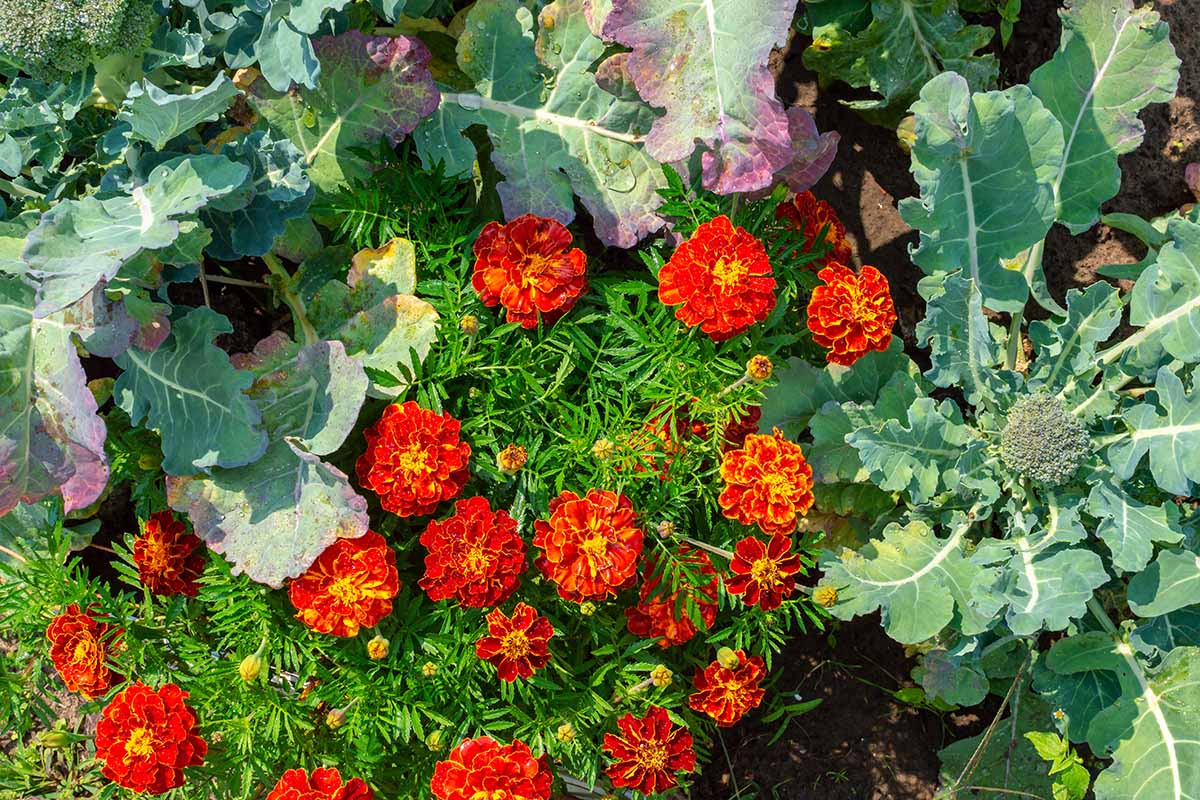The Ultimate Guide To Companion Planting
The Ultimate Guide to Companion Planting
Companion planting is a gardening practice that involves planting certain plants together to benefit each other. Companion plants can help to deter pests, attract beneficial insects, improve soil fertility, and even increase crop yields.
There are many different principles of companion planting, but some of the most common include:
- Pest-repelling plants: Some plants, such as marigolds, mint, and nasturtiums, can help to repel pests from nearby plants. For example, marigolds are known to repel nematodes, which can damage the roots of tomatoes and other plants.
- Bee-friendly plants: Many flowering plants attract bees and other beneficial insects, which help to pollinate crops. This is important for ensuring a good harvest of fruits and vegetables.
- Competitive plants: Some plants, such as beans and peas, have deep roots that help to improve soil fertility. Other plants, such as tomatoes and cucumbers, have shallow roots that help to prevent soil erosion. By planting these plants together, you can create a more balanced and productive garden.
If you're new to companion planting, it's a good idea to start by learning about the basic principles and then experiment with different combinations of plants. There are many resources available online and in libraries that can help you get started.
Here are some of the most popular companion planting combinations:
- Marigolds and tomatoes: Marigolds help to repel nematodes, which can damage the roots of tomatoes.
- Nasturtiums and cabbage: Nasturtiums help to repel aphids, which can damage cabbage leaves.
- Beans and peas: Beans and peas fix nitrogen in the soil, which benefits other plants in the garden.
- Carrots and onions: Carrots and onions help to repel each other's pests.
- Lettuce and tomatoes: Lettuce helps to shade the roots of tomatoes, which can help to prevent them from wilting.
Here are some tips for companion planting:
- Consider the size and growth habit of the plants you're planting. Some plants, such as tomatoes and corn, grow tall and need plenty of space. Others, such as lettuce and spinach, grow more compactly. Plant taller plants in the back of your garden and shorter plants in the front.
- Take into account the sunlight and water requirements of the plants you're planting. Some plants need full sun, while others prefer partial shade. Some plants need a lot of water, while others are more drought-tolerant. Plant plants with similar sunlight and water requirements together.
- Rotate your crops. Planting the same crops in the same spot year after year can deplete the soil of nutrients. Rotating your crops helps to keep the soil healthy and productive.
- Experiment. There is no one-size-fits-all approach to companion planting. The best way to find out what works for you is to experiment with different combinations of plants.
Companion planting is a great way to improve your garden's health and productivity. By planting certain plants together, you can help to deter pests, attract beneficial insects, improve soil fertility, and even increase crop yields.
When it comes to gardening, one of the most important things to consider is plant compatibility. Some plants simply don't get along, and planting them together can lead to problems such as disease, pests, and poor growth.
If you're not sure which plants are compatible, a great resource is Gardenia Inspiration. This website provides a comprehensive database of plant compatibility information, as well as tips on how to choose the right plants for your garden.
Gardenia Inspiration is also a great place to learn more about the specific needs of different plants. For example, some plants prefer full sun, while others prefer partial shade. Some plants need well-drained soil, while others are more tolerant of moisture.
By understanding the compatibility and needs of different plants, you can create a beautiful and healthy garden that will thrive for years to come.
FAQ of compatible plants
Here are the 5 most frequently asked questions about compatible plants, along with valuable insights and solutions:
- What are compatible plants?
Compatible plants are those that can grow well together in the same environment. They have similar water and nutrient requirements, and they are not susceptible to the same pests or diseases. When compatible plants are grown together, they can help each other thrive. For example, some plants can provide shade for others, while others can attract beneficial insects.
- How do I know if two plants are compatible?
There are a few things you can look for to determine if two plants are compatible. First, consider their water and nutrient requirements. Plants that have similar needs are more likely to be compatible. Second, check to see if they are susceptible to the same pests or diseases. If they are not, then they are less likely to compete for resources and can help each other stay healthy. Finally, consider the overall appearance of the plants. If they look like they would complement each other, then they are more likely to be compatible.
- What are some examples of compatible plants?
Here are a few examples of compatible plants:
- Tomatoes and basil: These two plants are often grown together in the same garden because they complement each other's needs. Tomatoes require a lot of sun and water, while basil prefers partial shade and drier soil. The basil helps to deter pests from the tomatoes, and the tomatoes provide the basil with the nutrients it needs to thrive.
- Lavender and roses: These two plants are both drought-tolerant and can thrive in full sun. They also have similar pH requirements. Lavender can help to repel pests from roses, and the roses can provide the lavender with the nitrogen it needs to grow.
- Pansies and petunias: These two flowers are both easy to care for and can add color to any garden. They have similar water and nutrient requirements, and they are not susceptible to the same pests or diseases. Pansies bloom in the early spring and fall, while petunias bloom in the summer.
- How can I plant compatible plants together?
When planting compatible plants together, there are a few things you need to keep in mind. First, make sure that the plants have the same sunlight and water requirements. Second, consider the size of the plants. If you are planting tall plants, make sure to give them enough space to grow. Finally, plant the compatible plants in a location that is protected from pests and diseases.
- What are some tips for caring for compatible plants?
Here are a few tips for caring for compatible plants:
- Water the plants regularly, but do not overwater them.
- Fertilize the plants according to their needs.
- Remove dead or diseased leaves.
- Protect the plants from pests and diseases.
- Deadhead flowers to encourage new blooms.
By following these tips, you can help your compatible plants thrive and enjoy their beauty for many years to come.
Image of compatible plants
Here are 5 images of compatible plants from Pinterest:
- Tomatoes and basil: Tomatoes and basil are a classic companion plant combination. The basil helps to deter tomato hornworms, and the tomatoes provide support for the basil to climb.

- Marigolds and tomatoes: Marigolds are another good companion plant for tomatoes. They help to repel nematodes, which can damage tomato roots.

- Cucumbers and nasturtiums: Cucumbers and nasturtiums are both moisture-loving plants, so they can help each other out by keeping the soil moist. Nasturtiums also help to deter cucumber beetles.
- Peas and carrots: Peas and carrots are a good companion plant combination because they have different root systems. Peas have a taproot, while carrots have a fibrous root system. This means that they won't compete for resources and can help each other grow.

- Broccoli and marigolds: Broccoli and marigolds are a good companion plant combination because they have different pest problems. Broccoli is susceptible to cabbage moths, while marigolds help to repel pests.

Post a Comment for "The Ultimate Guide To Companion Planting"